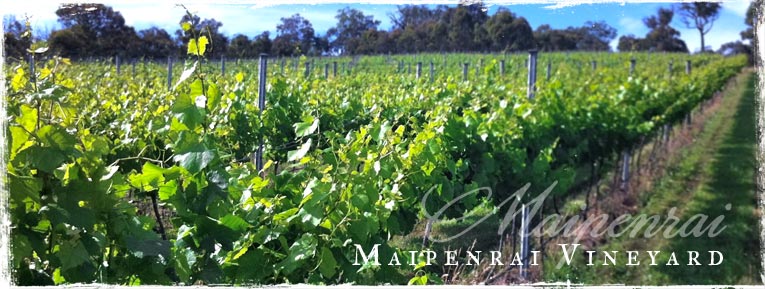 Loading... Please wait...
Loading... Please wait...Shop Online

The Key to making exceptional Pinot Noir is an exceptional Vineyard. Our 1.1 hectare vineyard lies on the western ridge of the Yass River Valley, at an altitude of 760m above sea level. The soil is clay interspersed in large quantities of rock , and the vineyard lies on a considerable north facing slope of 15 degrees, with the rows running due North/South.
Our vineyard is planted with 6 Pinot Noir Clones: MV6, and the Dijon Clones, 114, 115, 386, 521, and 777. The vineyard has a 2.5m row spacing, with a 1 meter spacing between plants giving 4000 vines per hectare - a significantly higher plant density than most vineyards in Australia.
We use a trellis that allows us to employ vertical shoot positioning (VSP), which is appropriate given the vigour of our vineyard. The vines are cane pruned, and we aim for roughly 1-1.5 tonnes/acre off the vineyard - or 2.5-4 tonnes/hectare. To ensure such low yield, we prune hard, do extensive shoot thinning, and remove any excess fruit, typically before veraison.
Of the major varieties of red wines, Pinot Noir requires the coolest climate to produce profound wines, and this explains why Australia is not a major player in the world in this varietal - most of the wine regions in the country are too hot to produce great wines. Canberra, proper, is a very cool wine district by Australian standards, but most vineyards, even here, are too warm to produce great Pinot Noir wines. However, for every 100m in altitude one rises, the average temperature drops by an average 0.7 degrees Centigrade, and therefore by moving to higher altitudes, it is possible to get to a colder site. Maipenrai, at 760m, is 200-300m higher than the vineyards located near Murrumbateman, and is closer to the coast and therefore regularly receives summer sea-breezes, making it significantly colder than Australia's best known Pinot Noir producing region, the Yarra Valley. So while most of Australia picks their Pinot Noir in early March, here in the high regions around Canberra we are able to pick later - the end of March through mid April. This allows the fruit to ripen in very cool conditions, contributing to the rich, long-lived, and deeply coloured Pinot Noirs the region is capable of producing.

